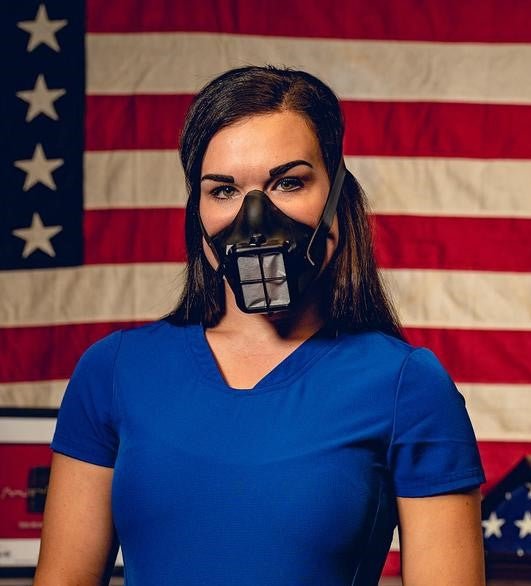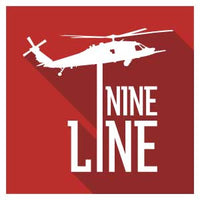How to Wear & Clean the Homeland AMPP Mask

The Homeland AMPP (American Made Personal Protective) Mask is a patent-pending, American Made injection molded product developed in response to the recent COVID-19 pandemic.
It is designed as a reusable mask that comes with a 10pk of replacement filters. We are in the process of applying for Expedited FDA approval on this mask but unless we receive authorization from the FDA, we cannot publish independent testing nor can we make any claims to its effectiveness against COVID-19 or any other pathogen.
As such we must promote the use of FDA approved medical devices over ours and unequivocally state that:
(1) This product has not been FDA cleared or approved (2) This product has been authorized by FDA under an EUA for use as source Control by the general public as well as by HCP in healthcare settings as to help prevent the spread of infection or illness during the COVID-19 pandemic. (3) This product is authorized only for the duration of the declaration that circumstances exist justifying the authorization of the emergency use of medical devices, including alternative products used as medical devices, during the COVID-19 outbreak, under section 564(b)(1) of the Act, 21 U.S.C. § 360bbb-3(b)(1) unless the authorization is terminated or revoked sooner. (4) This product is not cleared by FDA for use in any surgical setting or where significant exposure to liquid, bodily or other hazardous fluids, may be expected; use in a clinical setting where the infection risk level through inhalation exposure is high; or use in high risk aerosol generating procedures; and the product does not provide antimicrobial or antiviral protection or infection prevention or reduction.
Instructions for use: Prior to first use and at the end of each use we recommend cleaning your AMPP mask in accordance with the following guidelines as outlined by OHSA (in 29 CFR 1910.134). The following CDC blog site summarizes the suggested cleaning method here:
OSHA: RESPIRATOR CLEANING PROCEDURE
- Remove filters, cartridges, or canisters. Disassemble face pieces by removing speaking diaphragms, demand and pressure-demand valve assemblies, hoses, or any components recommended by the manufacturer. Discard or repair any defective parts.
- Wash Components in warm (43 degrees C [110 degrees F] maximum) water with a mild detergent or with a cleaner recommended by the manufacturer. A stiff bristle (not wire) brush may be used to facilitate the removal of dirt.
- Rinse components thoroughly in clean, warm (43 degrees C [110 degrees F] maximum), preferably running water. Drain.
- When the cleaner used does not contain a disinfecting agent, respirator components should be immersed for two minutes in one of the following: a. Hypochlorite solution of iodine (50 ppm of chlorine) made by adding approximately one milliliter of laundry bleach to one liter of water at 43 degrees C (110 degrees F); or, b. Aqueous solution of iodine (50 ppm iodine) made by adding approximately 0.8 milliliters of tincture of iodine (6-8 grams ammonium and/or potassium iodide/100cc of 45% alcohol) to one liter of water at 43 degrees C (110 degrees F); or, c. Other commercially available cleansers of equivalent disinfectant quality when used as directed, if their use is recommended or approved by the respirator manufacturer.
- Rinse components thoroughly in clean, warm (43 degrees C [110 degrees F] maximum), preferably running water. Drain. The importance of thorough rinsing cannot be overemphasized. Detergents or disinfectants that dry on face pieces may result in dermatitis. In addition, some disinfectants may cause deterioration of rubber or corrosion of metal parts if not completely removed.
- Components should be hand-dried with a clean lint-free cloth or air-dried.
- Reassemble face piece, replacing filters, cartridges, and canisters where necessary.
- Test the respirator to ensure that all components work properly.
* Table Ref URL: https://blogs.cdc.gov/niosh-science-blog/2019/02/14/v-day-2019/
Assembly and Use recommendations:
- Once cleaned using methods outlined by OHSA (in 29 CFR 1910.134), assemble your facemask, filter cage, and strap as depicted in (fig. a). Note the strap has multiple holes to adjust to YOUR face and is not meant to be shared with anyone other than the purchaser.
- You can cut excess material off of the strap once fit to your face (fig. b)
- Once fit for your face place the filtration medium on the frame of the face mask (fig. c)
- Place the filter cage over the filter medium by first inserting the lower facemask receiving guide into the lower filter cage receiving port (fig. d)
- Insert the upper facemask receiving guide into the upper filter cage receiving port (fig. e)
- **Wear as shown and replace filtration often (fig. f)
At this time we cannot recommend the proper interval to replace the filtration medium. We will submit to the FDA a proposal based on independent testing conducted. As a precaution, we would advise that you change filter medium once daily at a minimum. Note this device is not recommended for use in an environment where there is a high concentration of active COVID patients. Whenever possible utilize FDA approved respirators prior to using this device.




Instructions for assembly are marginal. Is there supposed to be an extra piece? I do like it however.
We received our masks and really applaud you stepping into the breach to making a reusable mask that is Made in the USA and helping out this great country. I find the mask easy to assemble and to use. We were some of the early orders and got the 1.0 style and really appreciate the 1.1 style upgrade that you emailed about. We have not received ours yet, but looking at the video that was attached, I feel that your modification is a positive change. I know that your production is streamlined to be as simple as possible. Would it be possible to modify the molding process to allow a one-way exhalation valve? I did not find any issue in my use of the mask, but my wife has asthma, and even though she hasn’t tried her mask yet, she may find a one-way discharge valve easier for her to breathe. Just food for thought. Thanks again. Bravo Zulu!!!
Hello, I was wondering about using a UVC Lamp Sterilizer from a manufacturer like PhoneSoap to effectively clean the filter material in your AMPP mask. Do you think it would be an effective complimentary match? Do you think the same technology would be equally effective in cleaning all the other parts with this UVC light? Thanks
Leave a comment